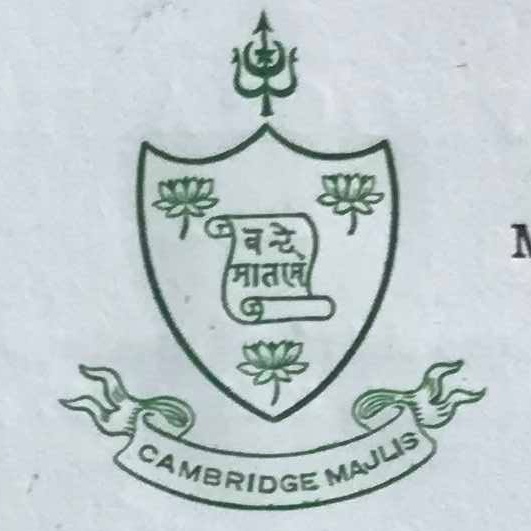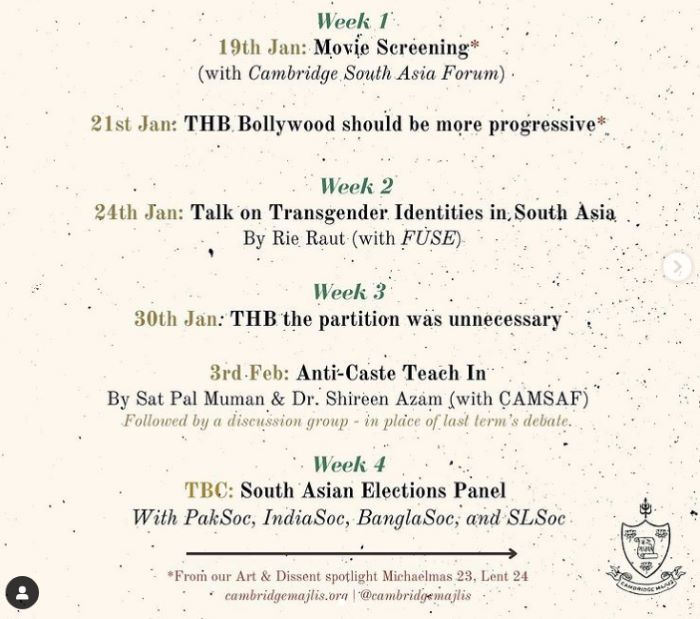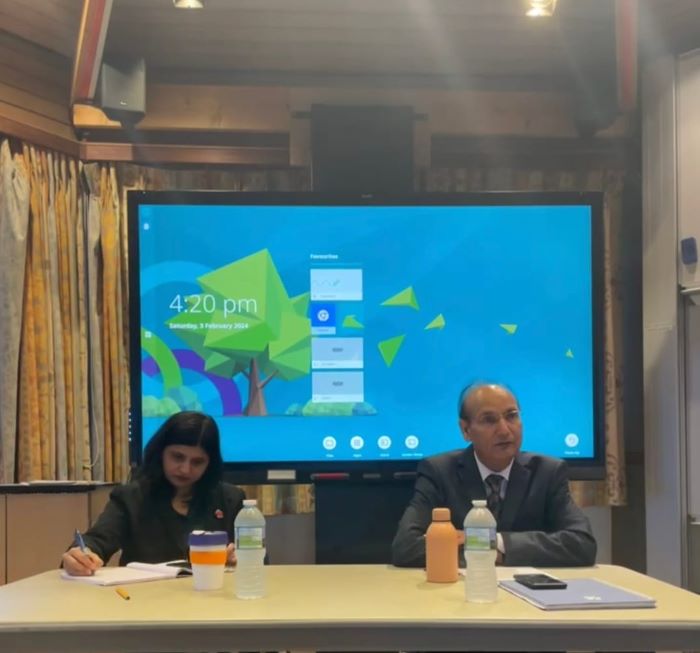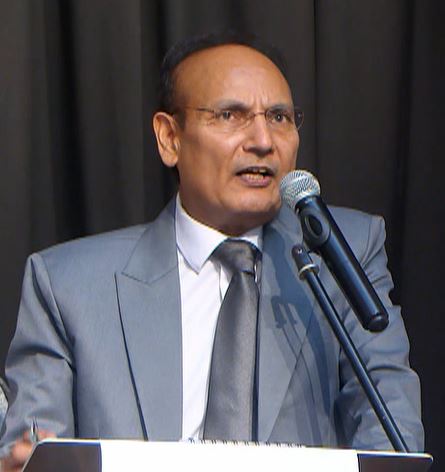Anti-Caste Teach in Seminar organised by Cambridge Majlis
Fisher Building, St John’s College, Cambridge University
Saturday, 3rd February 2024
 by
by
Sat Pal Muman, Caste Watch UK
Thank you for inviting me.
I would like to extend special thanks to Cambridge Majlis for the opportunity.
In particular, I wish to thank Ananya who connected with me to extend the warm invitation to talk about Anti Caste discourse.
 Caste is a social construct and is found in many South East Asian countries and also in America, Africa, Japan and a number of other countries.
Caste is a social construct and is found in many South East Asian countries and also in America, Africa, Japan and a number of other countries.
The largest number of those affected by caste are to be found in the Indian sub-continent, especially in India. This talk will focus on the Indian variety and how Indian variety of caste has spread to other parts of the world.
In public discourse, you will find many defend the Caste System and conflate it with Class system in a deliberate act of creating confusion.
Dr B R Ambedkar in his Annihilation of Caste writes that the Caste System is not merely a division of labour but is also a division of labourers. If you are born into a caste then you die in the same caste irrespective of your changed economic status. In a class system there is vertical mobility which is denied in the Caste System.
Caste Theory
Class, Race and Ethnicity are well understood concepts but Caste is complex or is made to appear complex.
However, scholars, sociologists, historians and anthropologists have attempted to search for origins of Caste.
An essay written by Shelly Shah in an online sociology forum, summarises a number of approaches, namely
(i) Racial theory of caste, (ii) Political theory of caste, (iii) Occupational theory, (iv) Traditional theory, (v) Guild theory, (vi) Religious theory and (vii) Evolutionary theory.
We will not have time to go into any of these theories but I will briefly refer to a paper read by Dr Ambedkar when he was at Columbia University in 1916.
I will take on the Ambedkarian perspective on Caste.
DR Ambedkar read this paper before the Anthropology Seminar of Dr Goldenwiezer entitled Castes in India: Their Mechanism, Genesis and Development
In this paper, Dr Ambedkar propounds a theory of caste, which I will briefly summarise as follows:
- India is a mixture of Aryans, Dravidians, Mongolians and Scythians
- Initially they were in a tribal state but after initial punch ups so to speak, settled and evolved a common culture in India, giving rise to cultural homogeneity.
- Because of this cultural homogeneity, caste became a problem difficult to explain
- Hindu Society from the earliest period was composed of classes, namely (i) Brahmins (priestly class); (ii) Kshatriya – military class; (iii) Vaishya – merchant class; (iv) Shudra – artisan or menial class. These classes when qualified could change their class status
- There was a prevailing custom of exogamy which existed in which blood kins could not marry or marriage was controlled by a custom of Gotra which was clan based. There were rigorous penalties for violating Exogamy like excommunication etc
- At some time in the History of the Hindus, the priestly class socially detached itself from the body of the people through a closed-door policy to become a caste by imposition of endogamy e.g. to marry within a caste
- In due course, the custom of endogamy was imitated by all non-Brahmin sub-divisions or classes who in turn became endogamous castes. It is the infection of imitation that caught all these sub-divisions in their onward march of differentiation and turned themselves into castes.
- Any breach of endogamy and exogamy resulted in ex-communication which in turn resulted in other castes that is if the ex-communicated could not be absorbed into any of the other sub-divisions a further caste was created
- Creation of castes meant superposition of endogamy over exogamy
- This meant simultaneous restrictions of marriage within the caste but also adhering to the system of Gotra e.g. to marry outside the Gotra but to stay within the caste.
- The enforcement of endogamy within a closed system, created upon the death of one partner a problem of surplus woman and surplus man.
- This had a devastating effect on women. If her partner died the woman was forced to commit Sati (die with her husband) or remain a widow
- The man could remain a widower or marry a girl child (if there was lack of suitable match) but the Woman could not re-marry which came to be treated as mark of honour and sacrifice
- The man did not have to commit sati or remain a widower as the man was considered an asset to the caste group.
Dr Ambedkar writes that
- Manu (the author of the notorious Manusmriti) did not give the law of caste
- Caste existed before Manu
- Manu was upholder of caste and therefore philosophised about it
- Manu did not ordain the present order of Hindu Society
- His work ended with codification of existing caste rules and the preaching of caste Dharma – which is essentially preaching of custom as law
Furthermore, in another treatise called, Who Were the Shudras, Dr Ambedkar writes that
- The Rig Veda – a sacred religious text contains a hymn called the Purush Sukta
- Purush Sukta is a theory of the universe – cosmogony. Purush has thousand heads, a thousand eyes enveloping the earth etc
- The Brahmin is created from the Head of Purush; The Kshatriya from the Arms, Vaishya from the Thighs and Shudra sprang from his Feet
- Having Purush Sukta in the Rig Veda deemed the text of the Purush Sukta as sacred which therefore made the four-fold division of society, namely Brahmin, Kshatriya, Vaishya and Shudra, a sacred institution
- These divisions were forcefully enforced by the Manusmiriti and other Hindu religious texts. Any breaches of Caste rules resulted in severe penalties and punishments
Caste and Diaspora
In his paper Castes in India: Their Mechanism, Genesis and Development, Dr Ambedkar quotes Dr Ketkar as follows:
As long as caste in India does exist, Hindus will hardly intermarry or have any social intercourse with outsiders; and if the Hindus migrate to other regions on earth, Indian caste would become a world problem
In an estimate by the Indian Government, there are over 20 million people of Indian origin who live in foreign countries. Countries of destination mainly are USA, UK, Canada, Australia, Italy and Germany and of course Britain
Evidently, the virus of caste has also travelled to all these other countries.
So how has the caste system affected communities in the UK?
Equality Act 2010
A per the Equality Act 2010, there is a recognition that
The concept of “caste” is complex, although is generally understood to refer to hereditary, endogamous (marrying within the group) communities differentiated according to different functions of life, such as occupation etc
The concept is associated with South Asia, particularly India and its diaspora.
Caste discrimination is not expressly prohibited under UK equality legislation, although section 9 of the Equality Act 2010, as amended, currently requires the Government to introduce secondary legislation to make caste an aspect of race, thereby making caste discrimination a form of race discrimination. The Coalition Government at the time, that’s Conservative and Liberal Democrats, initially indicated that this legislation would be introduced to Parliament during summer 2015.
Subsequently, Conservative Government came into power and reviewed its position on the need to introduce legislation, following the Employment Appeal Tribunal’s decision in Chandhok & Anor v Tirkey [2014]
In that case the Employment Appeal Tribunal noted that caste discrimination is capable of being unlawful under current existing law, provided that the circumstances of the case fall within the existing prohibition of race discrimination, [perhaps on grounds of ethnicity]
The Chandhok V Turkey case
concerned a domestic worker whose employment rights were violated and was treated like a domestic slave. The victim argued she was mistreated due to her Indian Adivasi tribal status linked to her Caste but the presiding judge remarked that it was not his position to make a finding of caste discrimination – caste being a complex matter but found in favour of the victim based on breach of her employment rights alone.
 However, in September 2016 the Government announced that it would conduct a public consultation on the issue. The consultation was published on 28 March 2017 and ran until 18 September 2017. The Government published its response on 23 July 2018, concluding against further legislation, preferring to rely on developments in case law.
However, in September 2016 the Government announced that it would conduct a public consultation on the issue. The consultation was published on 28 March 2017 and ran until 18 September 2017. The Government published its response on 23 July 2018, concluding against further legislation, preferring to rely on developments in case law.
The Conservative Government has therefore committed to repealing the duty, under the amended section 9 of the Equality Act, to legislate to prohibit caste discrimination.
But so far, the government has not taken any steps to repeal the provision.
It is worth recalling that the Equality Act 2010 is a civil law which covers Employment, Education and provision of goods and services. Any breach of Caste law in these areas would require the victim to surmount a huge financial hurdle to seek and obtain any form of justice.
What happened between 2013 and 2018? and why did the Government open a Consultation in 2017 seeking a fresh mandate whether to implement or not to implement the caste provision?
The government (that is the Tory Government) came under powerful political pressure not to implement the caste provision and sought an escape route and re-opened the public consultation under pressure from the anti-lobby consisting mainly of Hindus, a section of Sikhs and a section of Jains.
The Equality Act 2010 contains an Explanatory Note with respect to Caste:
The term “caste” denotes a hereditary, endogamous (marrying within the group) community associated with a traditional occupation and ranked accordingly on a perceived scale of ritual purity. It is generally (but not exclusively) associated with South Asia, particularly India, and its diaspora. It can encompass the four classes (varnas) of Hindu tradition (the Brahmin, Kshatriya, Vaishya and Shudra communities); the thousands of regional Hindu, Sikh, Christian, Muslim or other religious groups known as jatis; and groups amongst South Asian Muslims called biradaris. Some jatis regarded as below the varna hierarchy (once termed “untouchable”) are known as Dalit.
This explanation of Caste provoked a severe reaction from the Hindus who joined with some Sikhs to oppose the caste legislation while other religious groups such as Muslims and Christians did not show any reaction.
You will be aware, that there is no legal definition of Caste in Indian Law yet India makes Caste discrimination unlawful as per article 15 of the Indian Constitution. Other legal instruments have been enacted such as the Prevention of Atrocities Act, Scheduled Caste and Scheduled Tribes Act and Affirmative Action in order to provide protection against Caste Discrimination (and untouchability) in India.
In opposition to our Caste campaign, we saw the emergence of Alliance of Hindu Organisations (AHO) consisting of seven organisations who actively campaigned to sabotage the Caste legislation. These are: Hindu Forum of Britain (including the International Krishna Consciousness UK), Hindu Council UK, National Council of Hindu Temples UK, BAPS Swaminarayan Sanstha UK, National Hindu Students Forum, City Hindus Network, Vishwa Hindu Kendra, Southall UK.
The AHO declared that the word Caste [must] not [to] remain in Legislation. It alleged, that its continued use is an act of anti-Hindu racial and religious violence and prejudice of the highest order.
In April 2017, there was a Publication ‘Caste, Conversion and a Thoroughly Colonialist Conspiracy’ by Satish Sharma, General Secretary of National Council of Hindu Temples (UK)
The document in question (as I understand) was released at the Indian High Commission by Subramanian Swamy – a senior figure in the BJP leadership – states that the caste system in India and Britain is a ‘creation and imposition of white Anglican Colonialism missionaries’
These arguments find an echo in the counter narrative to Caste law not only in Britain but also replicated in other places namely USA, Canada and Australia
In the UK, Caste Watch began its activism based on testimonials and recorded people’s life experiences. Here are some examples:
i)
…. To be born of an untouchable woman that child will always be known as unclean and dirty and regarded as social leper and will never be able to move over the caste barrier.
The mother who gave her birth will be regarded as unclean inside and would mean that child will be open to abuse.
It does not matter how much money you have in the bank or how many degrees you have under your belt many will choose to define you by your caste.
I was not allowed to go into the Kitchen or touch food because I was considered impure.
ii)
I met someone we just thought we should get married. Her parents didn’t agree. They would only oppose us because they thought they were of a higher creed or caste than myself. Nothing else. Her parents started beating her up. One day her dad beat her up so much that I had to take her away from that house. Her back was like full of bruises and everything and I took her to the doctors. They are like willing to hurt their daughter. They are willing to throw her away just because they think the person she loves is lower than them”.
iii)
When I discovered my caste, it changed my life completely. I actually believed that I was inferior. At secondary school, my peers knew about my caste before I did and this was evident in name-calling such as ch**ri and cha***ri and rejection from social and group activities. I didn’t understand why I was being treated like this until I asked what ch**ri and cha***i meant.
iv)
I first heard the word ch**ra at school at the age of 15 years. I was confused and angry because it had to mean something bad for it be said to me time after time…..
v)
I am a Muslim. I came across Caste in a Steel Mill. A person was from a low-caste. He was not allowed to sit in the eating area where the high-castes sat.
There is enough evidence to suggest Casteism is alive in Britan as per domain covered by the Equality Act 2010. One glaring example of caste-based hate speech came to light recently which gained public attention.
On 4th April 2023, a man was given 18 weeks custodial sentence after posting casteist offensive message on social media. He was arrested following a Thames Valley Police investigation and was charged with an offence contrary to section 127(1)(a) and (3) of the Communications Act 2003 for sending an offensive/indecent/obscene/menacing message/matter.
The man posted grossly offensive message on Tik Tok in July 2022.
The post deliberately targeted the so called ‘Cha***r’ and ‘Ch***ra’ communities [elsewhere described as Dalit] hurling sexual abuse, obscenities with threats of rape. In the Tik Tok message, the man also glorified the so called ‘Jat’ community for sexually abusing Dalit women in Indian villages as a matter of pride.
This case first went to the Crown Prosecution Service for a charging decision but was subsequently escalated to the Attorney General the highest legal authority for a final charging decision.
It is worth pointing out that Crown Prosecution guidelines recognise Caste. Anyone can be criminally prosecuted should caste be an aggravating factor in a criminal act.
Turning now to other countries…
Caste in USA, Canada and Australia
After many years of active campaigning to outlaw caste discrimination in the USA, there was a bill called SB403 in the state of California. This Bill had progressed successfully through both of the legislative chambers but was finally vetoed at the last hurdle by California State’s Democrats Governor Gavin Newsom, in October 2023 due to powerful Hindu Lobby!
Way back in 2022, California State University added Caste as protected category to its anti- discrimination laws.
A number of other USA universities and institutions also reflect Caste as protected characteristic, namely Brandeis University, Colby College, UC Davis, Carleton University, Harvard’s Graduate Student Union, the California Democratic Party, the Alphabet Workers Union, and UC San Diego’s Ethnic Studies Department.
Apple becomes first tech giant to explicitly ban caste discrimination in 2021. The company trains managers on Indian caste system following an ongoing case at Cisco Systems where a so called low-caste engineer accused the so called higher-caste engineers of blocking his career.
In February 2023, City of Seattle, became the first USA city to ban Caste Discrimination.
Last month, University of Toronto added Caste as protected Category.
In February 2023, A guardian piece ran a headline ‘A disease: Caste discrimination in Australia is on the rise but some are fighting back.
A professor of law at Melbourne University, Beth Gaze, says: “With the expansion of our subcontinental community I think it’s inevitable that [caste discrimination] is going to turn into a major problem in Australia. And I don’t think we can address other forms of racism without taking account of that.”
Chin Tan, race discrimination commissioner observed that he was, deeply concerned by the experiences of casteism in Australia.
It was by South China Monitoring Report that caste was recognised as a form of intersectional racism in 2022 by the Australian Human Rights Commission’s National Anti-Racism Framework, which acknowledged that caste discrimination includes denial of access to housing, access to education, as well as exclusion from community and religious activities.
Caste is nuanced, therefore a challenge as a concept but active campaigning to outlaw it is achieving some success but we still have long way to go, especially in Britain!
Thank you for your time.










